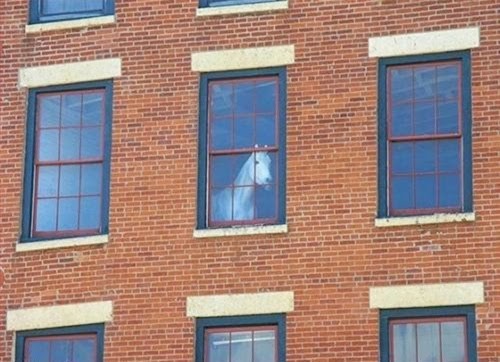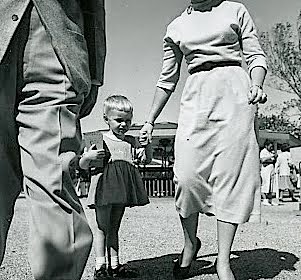

 One place to start thinking about how Bechdel's narrative is developed visually as well as textually, is to focus on how the interior "shots" are composed. What sense of everyday life is conveyed? How are relations between family members structured by their situation within rooms, hallways, windows, and so forth?
One place to start thinking about how Bechdel's narrative is developed visually as well as textually, is to focus on how the interior "shots" are composed. What sense of everyday life is conveyed? How are relations between family members structured by their situation within rooms, hallways, windows, and so forth?The first two photos above are from a fascinating New York Times interview with Alison Bechdel that takes place during a visit to her former home (now owned by others, but still keeping much of the original decoration intact). The writer, Ginia Bellefonte makes this perceptive remark about how the Victorian restoration is visual map of Bruce Bechdel's psyche:
"The offending accouterments are still in place: wallpaper imprinted with floral buds and a heavy chandelier that looks as if it were made of skulls. The combination seems a reminder of just how powerfully Victorian décor embraced the nascent and the sepulchral, life and the negation of it, much as the era’s mores were charged with the tension between vagrant urges and the enforced repression of them. If Bruce Bechdel aimed to keep the truth of his life hidden, one could argue that he also put it flamboyantly on display."
The rest of the article can be found here. The last photo above is a snapshot from when the Bechdel family was in residence. I'm sure you can pick out everything in the photo including the vase that somehow got too close to the edge of the table...
You can find a related NYT Q & A session with Alison Bechdel here.


























































No comments:
Post a Comment